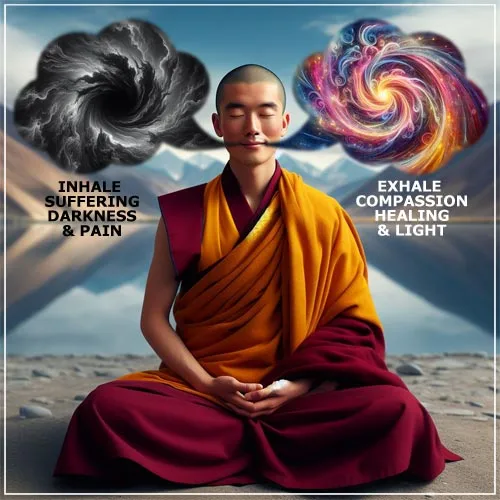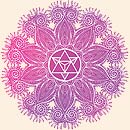
What is Tonglen Meditation?
Rooted in Tibetan Buddhist tradition, Tonglen is a powerful meditation that focuses on the exchange of suffering and healing. By embracing the practice of giving and receiving, practitioners can transform their own emotions, foster empathy, and contribute positively to the world. The ancient practice of Tonglen meditation offers a path towards serenity, compassion and self-transcendence.
Giving and Receiving
Tonglen means “giving and receiving” in Tibetan; Tong means “giving or sending”and Len means “taking or receiving”.
Tonglen is ‘exchanging self with other’ and encourages individuals to open their hearts and minds to the suffering of others.
Suffering is often seen as something to be avoided or suppressed. However, the Tibetan Buddhist tradition views suffering as an integral part of the human experience and believes that by facing it head-on, we can transcend our own limitations and cultivate profound compassion.
This practice challenges the belief that cherishing self can lead to genuine happiness. Tonglen teaches the key to freedom from personal pain and self cherishing lies in embracing and transforming the suffering of others. Practitioners envision breathing in the suffering, pain and darkness of others, using it to destroy their own self cherishing thoughts, then breathing it out as compassion and healing light.
Note: if you are new to meditation, it is important to seek a teacher or join a meditation class. The following is to be used as a guide only.

The Tonglen Practice
- Get Comfortable – find a comfortable and peaceful space where you won’t be disturbed. It can be as simple as sitting on a meditation cushion or finding an outdoor spot that connects to nature. A conducive environment allows practitioners to focus their attention inward and quieten their minds.
- Posture – Sit in a relaxed and stable position, it is beneficial to sit upright, with your back straight.
If possible sit cross legged in the 7 point vajra position:
- Straight back
- Cross Legged
- Folded hands, see picture
- Tuck your chin in
- Eyes looking down, resting & relaxed
- Tongue touching the upper palate
- Lips slightly apart
- Motivation – Set your motivation for the meditation; a typical Buddhist approach is to meditate for the benefit of all beings and to free all living beings from suffering.
- Connect with Suffering – take a few deep breaths and allow your body and mind to settle. As you enter a state of calmness, bring to mind someone who is suffering, perhaps a friend or family member who is going through a difficult time. Visualise and connect with their pain and suffering as vividly as you can, allowing yourself to truly empathise with their struggles.
If you are new to Tonglen it can be easier to learn the method by taking on your own suffering first. Practitioners connect with their own pain and suffering, whatever form it may take. This step involves acknowledging and embracing their own vulnerabilities, fears and struggles. By approaching their pain with compassion and an open heart, practitioners cultivate self-acceptance and self-love, laying the foundation for empathetic connection with others. - The Exchange – this is in 2 parts, the first part is inhaling suffering, the second part is exhaling compassion
- Inhale – on each inhalation, imagine you are taking in the suffering of others; visualise their suffering as black smoke or pollution. It is the self cherishing thoughts and ego that have caused the suffering, so visualise their suffering entering your heart at the root of your self cherishing. See it like a thunderbolt of lightening, smashing and destroying the self cherishing at your heart centre.
- Exhale – as you breathe out, visualise sending a stream of healing energy and compassion towards them, relieving their pain and providing them with solace.
- Conclusion – Slowly move your fingers & toes, open your eyes, and gently bring your attention back to the room.
- Dedication -Dedicate the positive energy & merit generated by your meditation to the benefit of all beings.










